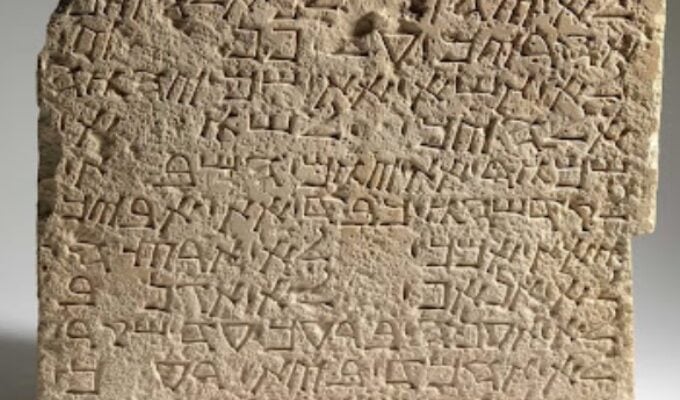Sotheby's dates the tablet to approximately 1,500 years ago, though some experts have challenged this. The artifact, weighing approximately 115 pounds and extending 24 inches in length, features ancient Hebrew script.
A stone tablet bearing the biblical Ten Commandments, which Sotheby’s auction house has declared the oldest known example of its kind, was sold on Wednesday for $5 million at auction. The anonymous buyer has announced intentions to donate the artifact to an Israeli institution.
Sotheby’s dates the tablet to approximately 1,500 years ago, during the late Roman-Byzantine era. The artifact, weighing approximately 115 pounds and extending 24 inches in length, features the Ten Commandments carved in ancient Hebrew script.
Jacob Kaplan, who discovered the tablet in 1943, reported that it was initially found in 1913 during railroad construction along Israel’s southern coastline. According to Kaplan, the stone had been repurposed as flooring in a residence, with its inscribed surface facing upward. Kaplan, who passed away in 1989, documented his findings in a scientific journal in 1947.
The artifact’s ownership history includes several transfers: It passed to an Israeli antiquities dealer in 1995, then to Brooklyn’s Living Torah Museum, before being acquired by collector Mitchell S. Kapel in 2016 for $850,000. Kapel sold the tablet on Wednesday at Sotheby’s New York.
The tablet presents a distinctive version of the Ten Commandments, notably omitting the commandment not to take the Lord’s name in vain and including a directive to worship at Mount Gerizim, a location revered by Samaritans in Judea and Samaria.

The auction proceeded despite significant expert skepticism regarding the tablet’s authenticity.
“This region’s antiquities market is notorious for forgeries,” noted Brian E. Daniels, director of research and programs at Philadelphia’s Penn Cultural Heritage Center. However, he added, “There remains the possibility that it is entirely authentic and represents a genuine historic discovery.”
Christopher A. Rolston, who heads the Department of Classical and Near Eastern Languages and Cultures at George Washington University, challenged the dating assertion.
“Sotheby’s claim of the Samaritan Ten Commandments inscription being roughly 1,500 years old cannot be verified,” he told The New York Times. “Without archaeological context or documented discovery, we can’t even confirm who originally found it.”
Rolston further questioned the discovery narrative. “The absence of any 1913 documentation is problematic, particularly since forgers and antiquities dealers commonly fabricate such origin stories to lend credibility to inscriptions. This could well be an invented narrative,” he said.
Selby Kiffer, Sotheby’s senior specialist in books and manuscripts, emphasized the stone’s physical deterioration patterns as crucial dating evidence. He particularly noted the significance of the script style, explaining, “The ancient Hebrew script provides crucial dating evidence, as we have clear historical records of when it ceased to be commonly used.”
“This exceptional price reflects the artifact’s unprecedented historical significance,” remarked Richard Austin, Sotheby’s worldwide head of books and manuscripts. “To stand in the presence of this tablet is remarkable—it represents a tangible link to the shared foundations of faith and culture that continue to influence our world today.”
Originally published by Israel Hayom PHOTOS: Use according to Section 27 A